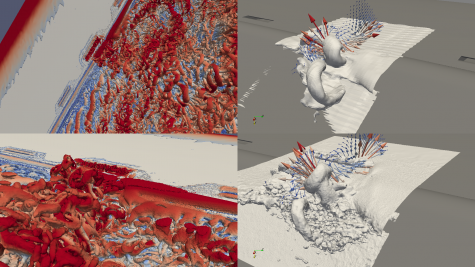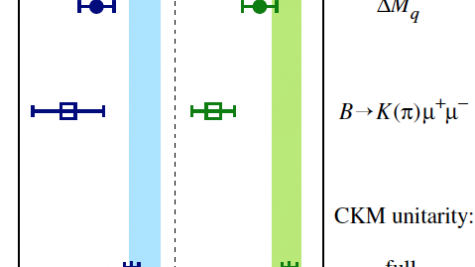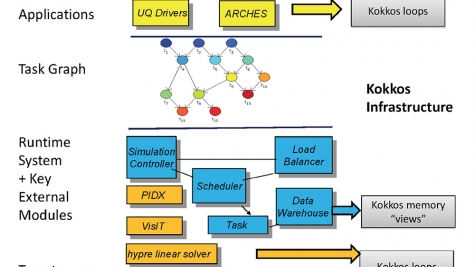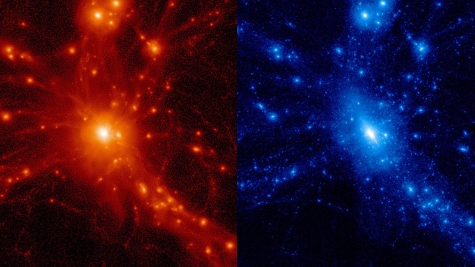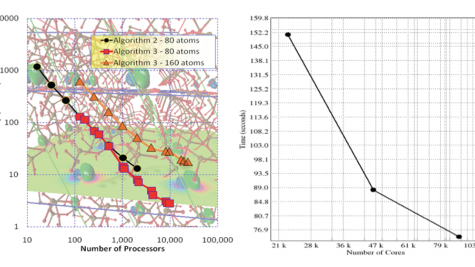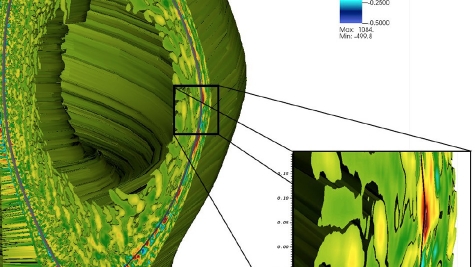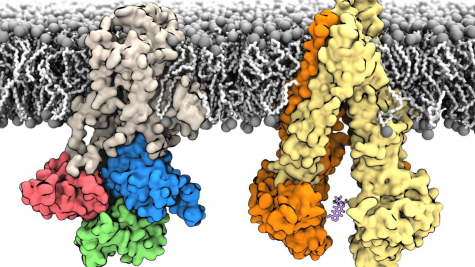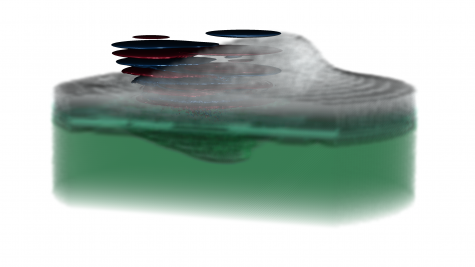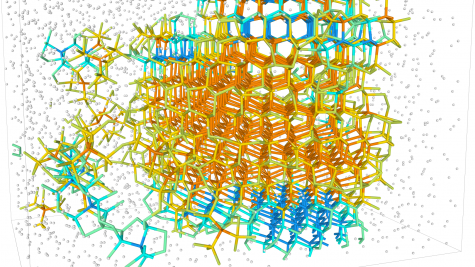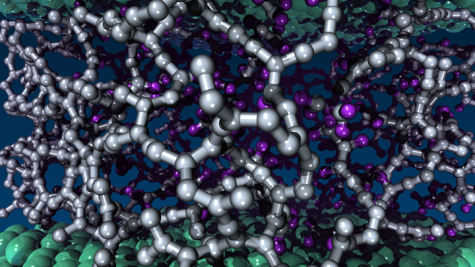ALCF projects cover many scientific disciplines, ranging from biology and physics to materials science and energy technologies. Filter ongoing and past projects by allocation program, scientific domain, and year.
Extreme-Scale Unstructured Adaptive CFD
This project seeks to advance simulations in two complex flow regimes— aerodynamic flow control and multiphase flow—by pairing a computational fluid dynamics solver with anisotropic adaptation so as to solve solve diverse problems in aerodynamic flow control and nuclear reactor heat exchangers. Both applications stand to dramatically extend the state-of-the art in turbulent flow simulations.
Lattice quantum chromodynamics calculations for particle and nuclear physics
By allowing the properties of particles observed in experiments to be calculated in terms of the fundamental properties of the quarks inside, this project will deliver a large number of calculations urgently needed by the experimental programs of high energy and nuclear physics.
Design and Evaluation of High-Efficiency Boilers for Energy Production Using a Hierarchical V/UQ Approach
U.S. pulverized coal power plants with significant carbon greenhouse gas emissions currently account for 25 to 30 percent of the electrical power on the electrical grid, accounting for as much as 90 percent in some states. Modeling greenhouse gas formation and reduction from primary combustion modification is a multiscale and multi-physics problem with a strong dependency on a combination of many factors. Such challenges are opportunities for high-fidelity simulation techniques that can run on exascale resources while providing insight into the development of cleaner energy-production technologies. this project aims to use an industrially relevant, large-scale turbulent combustion application for realistic energy simulations, providing insight into the development of cleaner energy-production technologies.
Extreme-Scale Cosmological Hydrodynamics
This Early Science Project will build upon new capabilities recently implemented in the extreme-scale HACC code to allow it to simultaneously model observations across multiple length scales and wavebands at high fidelity. The team will carry out one of the largest, most detailed cosmological simulations ever attempted, including gas physics and feedback effects and an additional gravity-only simulation at the same scale. These simulations will enable a range of science projects opening new cosmological probes based on cross-correlations (e.g., between the cosmic microwave background and large-scale structure) and studying the impact of baryonic physics on large-scale structure measurement—covering the enormous length scales characteristic of cosmological surveys while at the same time capturing the relevant small-scale physics.
NWChemEx: Tackling Chemical, Materials & Biochemical Challenges in the Exascale Era
The NWChemEx project intends to provide the frameworkfor a next-generation molecular modeling package that supports a broad range of chemistry research on a broad range of computing systems, from terascale workstations and petascale servers to exascale computers, along with an implementation of the critical computational chemistry methods needed to address the targeted science problems. The NWChemEx project will aid in the development of advanced biofuels to enhance the nation’s energy security and minimize climate change. Two inter-related challenges will be addressed: (1) the development of stress-resistant biomass feedstock, and (2) the development of energy-efficient catalytic processes to convert biomass-derived materials into biofuels.
High-Fidelity Simulation of Fusion Reactor Boundary Plasmas
The project goal is to advance the critical scientific understanding of plasma physics at first-principles level in a magnetic fusion device. This research aims to enhance the predictability of ITER performance, with special focus on the edge region that is crucial for confinement of burning plasma and a tolerable spread of heat on the wall surface. By solving fundamental kinetic physics equations, such work can help accelerate attaining fusion energy production. Multiscale behaviors of fusion reactor edge plasma in complex geometry can only be addressed through exascale computing.
Extending Moore's Law Computing with Quantum Monte Carlo
There is extreme urgency in identifying the possible paths forward to extending Moore’s law beyond Si-CMOS based computing technologies. A fundamental materials problem that must be addressed is leakage current in semiconductors. Large intrinsic carrier density is in general responsible of the leakage. By increasing the bandgap energy of a material, we can reduce current leakage; as a result, devices can be reliably operated at higher frequencies, beyond Si-CMOS limits. Current computational studies are limited to density functional theory, which does not have the necessary fidelity to study band gaps in correlated materials. This project aims to use QMCPACK to study the influence of impurities on band gaps near transition metal oxides interfaces using mult-ireference quantum Monte Carlo methods. Because of the size of the systems, such calculations can only be enabled by the peak performance offered by Aurora.
Metascalable Layered Materials Genome
This project will advance layered materials genome (LMG). Functional layered materials (LM) will dominate materials science in this century. The attractiveness of LMs lies not only in their outstanding electronic, optical, magnetic and chemical properties, but also in the possibility of tuning these properties in desired ways by building van der Waal (vdW) heterostructures composed of unlimited combinations of atomically thin layers. The researchers will perform 10^5-atom nonadiabatic quantum molecular dynamics (NAQMD) and 10^10-atom reactive molecular dynamics (RMD) simulations on Aurora for computational synthesis and characterization of LMs. The unprecedented simulations will (1) guide the synthesis of stacked LMs by chemical vapor deposition (CVD), exfoliation and intercalation, and (2) discover function-property-structure relationships in LMs with a special focus on far-from-equilibrium electronic processes.
Free Energy Landscapes of Membrane Transport Proteins
Membrane transport proteins are a unique class of biological macromolecular machines that play critical roles in numerous cellular processes. A distinct feature of these molecular machines is the involvement of large protein conformational changes, often in response to, or in concert with, the altered surrounding chemical environment. A complete understanding of how these proteins carry out their function will thus rely heavily on characterizing these conformational transitions. This work will utilize computational models to provide both detailed visualizations of large protein motions as well as quantitative predictions into the energetics of these processes.
